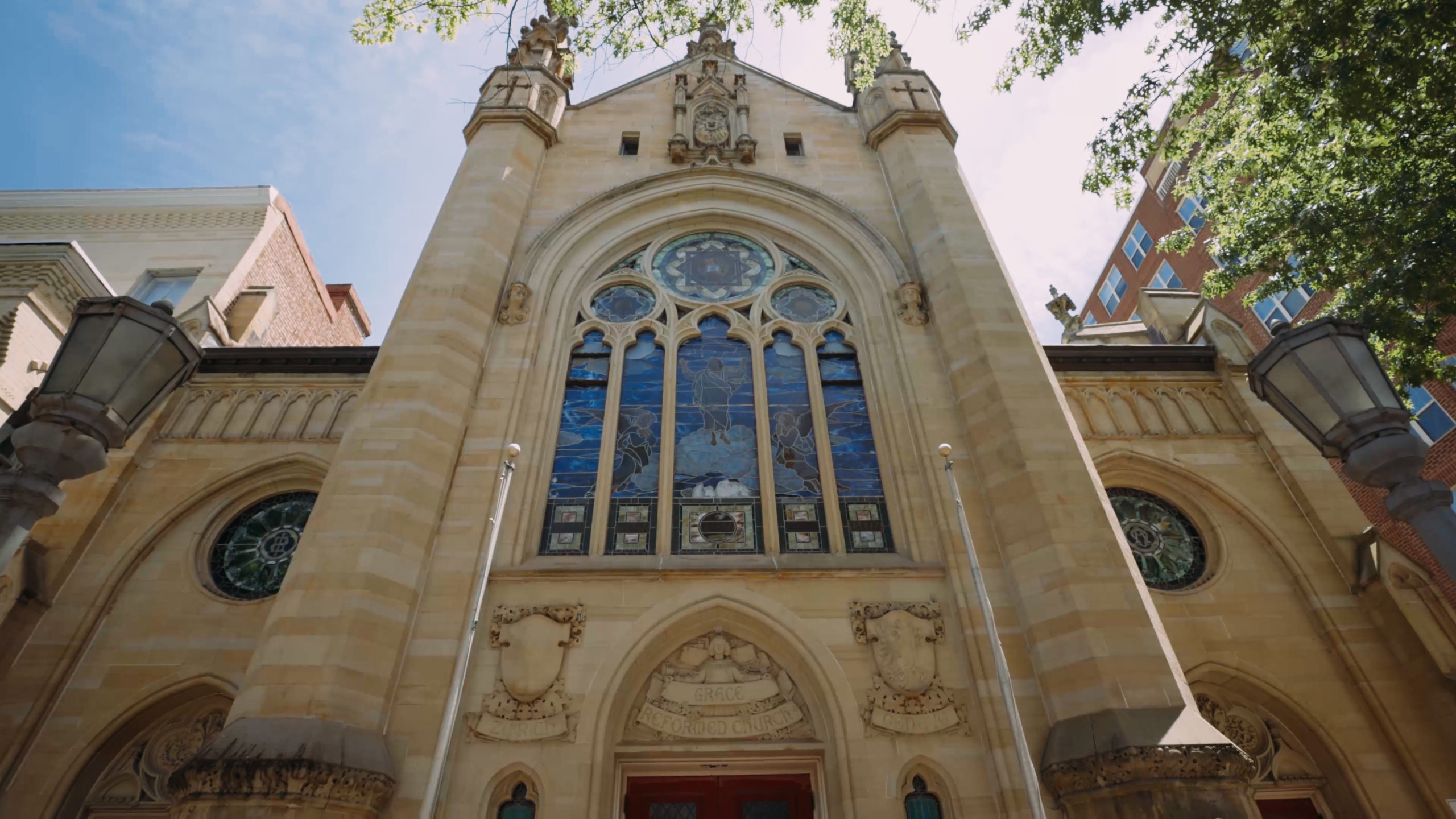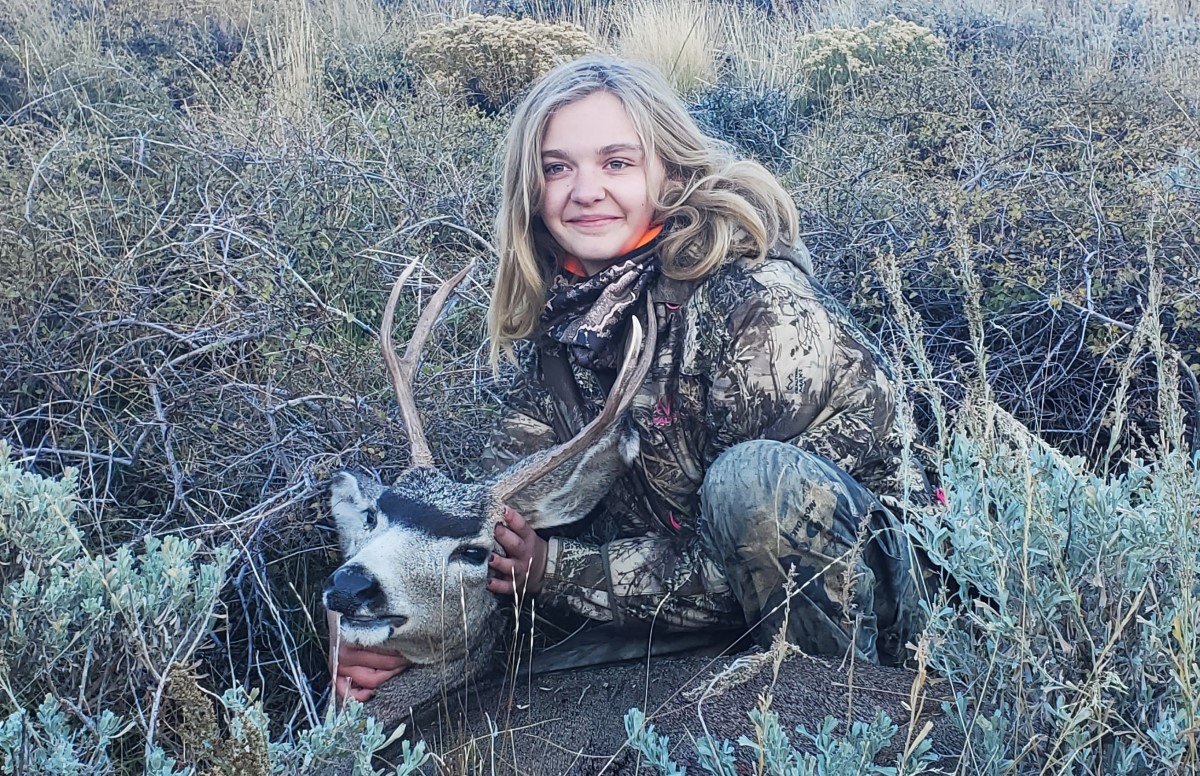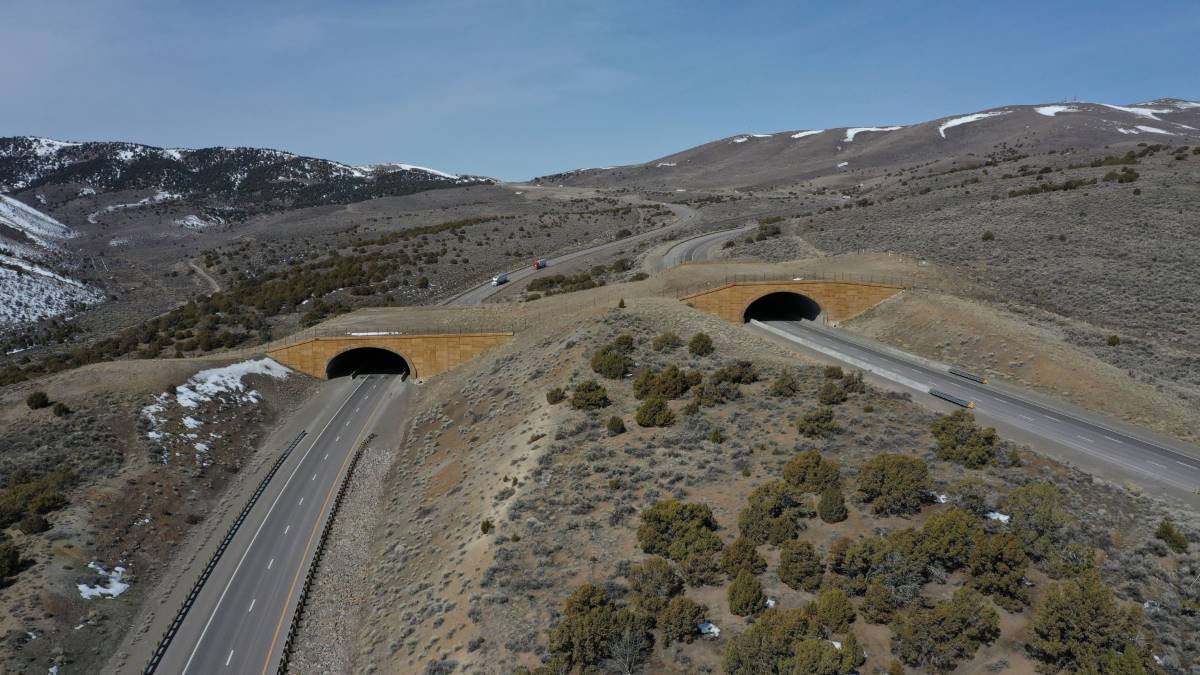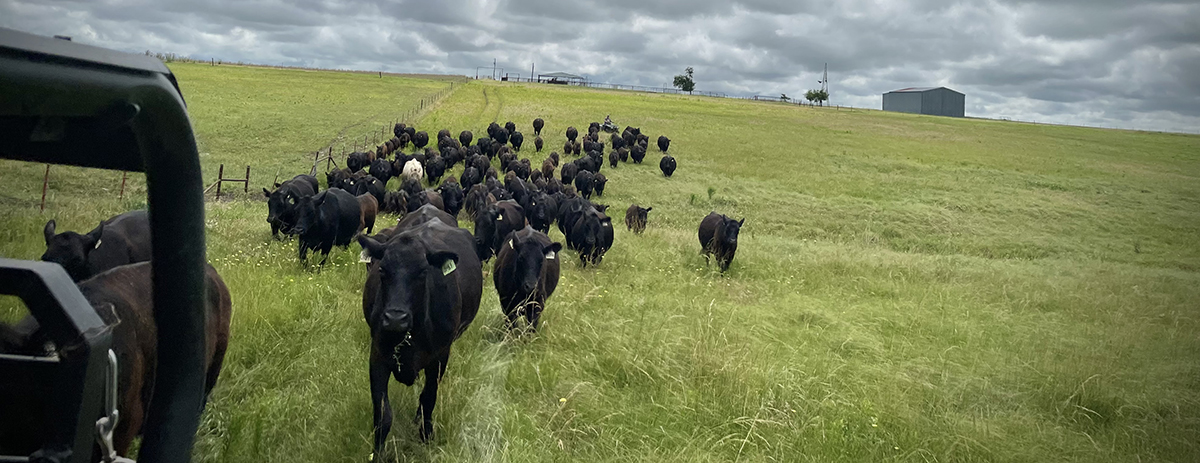Diago1st turkey 2021
Do you have any thoughts on this post?
With Washington, D.C., being the temporary, yet multi-year home for sitting presidents, it is no wonder that the city would be host to a number of “presidential churches.” During his time serving as vice president and president, Theodore Roosevelt was a regular visitor to one such institution, Grace Reformed Church, and walked the six blocks from the White House to worship there every Sunday he was in town. He sat in the same pew, now commemorated in his name, and was an active participant in the growth and fellowship of the church.

Today, the 119-year-old building is showing its age and needs considerable renovations. It’s also up for sale. And despite having earned a spot on the National Register of Historic Places, a private owner would have leverage on what they can do with the corner-lot property, including gutting the church to build condos or apartments.
A local congregation, Grace Capital City, is hoping to not only purchase the church and rehab the building, making it their permanent home, but also use it as a gathering place for the conservation community at large. I sat down with Jessica Moerman, vice president of science and policy for the Evangelical Environmental Network, Co-Founding Pastor of Grace Capital City, and wife to the church’s lead pastor, about why this church is of particular importance to this congregation and how they intend to keep the former president’s legacy of conservation alive and thriving within its walls.
How did you decide that the Grace Reformed Church building should be the permanent home for your congregation?
I am an earth and environmental scientist. My husband, Chris, is the lead pastor of our congregation. So, it was the coming together of both of our vocations, plus the integration of faith and conservation, and realizing that Theodore Roosevelt did the same thing. He called conservation the great moral issue. The Grace Reformed Church is a building he helped construct—he laid the cornerstone in 1902—and it was his spiritual home while living in Washington, D.C.

Why does Grace Capital City include the environment and conservation as part of its mission?
We practice a stewardship doctrine, which is found throughout scripture, where we’re called to be good stewards of everything that God has made. To us, that includes conservation, acting on climate, and protecting habitat and wildlife. When we make the connection between our ministry and our Christian mission, and if we’re taking the Bible seriously, that means we need to take good care of the great outdoors.
For me personally, I grew up in the foothills of the Great Smoky Mountains. My dad is a hunter. He would take my sisters and me out hunting with him. He always said that hunters and anglers are the greatest conservationists and have a deep connection and respect for the land and wildlife.
In our modern-day world, and especially in an urban environment, it’s easy to be divorced from the land, which makes it so important to ensure there is access for people to get out into nature and experience creation.
What types of conservation activities does your church take on?
Just recently, we did a trash cleanup along the Potomac River. We are launching a tree planting campaign next year. And we also simply make time to gather outdoors as a group to go on hikes in our local parks and connect with God in his creation.

Why do you think your congregation is so engaged in conservation and the outdoors?
Our current congregation is full of young professionals and college students who want to change the world and are motivated by their faith to take action. They see the former president as a crusader for righteousness, which simply means that when you see things are wrong you act boldly to fix them. That’s what this generation wants to do. They want to engage in addressing the big problems of the world, such as biodiversity loss, climate change, and our natural places being degraded.
Young people of faith want to see their church engage in this, too. They look to the scriptures and see the call to be good stewards, but they don’t see it being acted out in the church. That’s something our congregation wants to normalize. And doing it in Theodore Roosevelt’s spiritual home as president is the true embodiment of living history.
If you succeed in purchasing the building, how will you honor Theodore Roosevelt’s legacy within the church?
We envision the church as being a convening space, not just for our congregation to worship, but also for conservation organizations to meet in and utilize. There is the Roosevelt Memorial Room, which is essentially a function hall, that we would love to make available to the community.
Roosevelt had a long-term vision for everything he did. He wasn’t questioning if things would have an impact through the next news cycle or even the next election cycle. He wanted to make generational-level change. It’s been over 100 years since he laid the cornerstone of this building. Grace Capital City wants this church to be an active worshipping home and a place of faith in action for another 100 years.
To learn more about Grace Capital City’s efforts to purchase and restore Grace Reformed Church and get involved, watch the video or visit their website.
A family deer hunt reinforces the importance of forward-looking conservation solutions in Nevada
Over the years, acquiring a big game tag in Nevada has become highly competitive simply because there are far more hunters in our state than we have surplus animals available to harvest. All big game tags in Nevada are awarded through a lottery process and each year many sportsmen and sportswomen are disappointed because they do not draw.
Hunting is deeply engrained in my family. From very young ages, my children were engaged in my favorite pastime which later became theirs. All three have continued to hunt big game when given the opportunity. They love the meat as well as just being outdoors in the fall. When I was blessed with two granddaughters, I hoped they would also be interested in hunting on some level. The thought of sharing hunting knowledge, traditions, and experiences with them was a dream of mine.
This year, my 12-year-old granddaughter, Hayden, was eligible to apply for tags and fortunate enough to draw a youth mule deer tag. We made preparation and planning for the hunt a big part of our summer activities. When the season finally arrived, her dad and I took her across the state for the opening of her hunt. On the morning of the fourth day of hunting, Hayden spotted three bucks and we were able to get in range. With a well-placed shot, she put one of them down. To say we were excited would be an understatement! Amid a healthy amount of back-slapping, hugging, and even a few tears, the time-honored tradition of hunting in my family passed to the next generation. We made so many memories this fall that will last for the rest of our lives.

The point of this story is two-fold. One is to show how important our sport is to families like mine and how rewarding it is to recruit young hunters and make those memories in the field. The second point is that these traditions and opportunities depend on healthy herds and intact habitats in our state. For that reason, I’m particularly encouraged by two important steps taken by wildlife and land management agencies in Nevada that promise a brighter future for our big game populations.
Under an executive order issued by Governor Sisolak in 2021, the Nevada Department of Wildlife is developing a Sagebrush Habitat Plan with the goal of recovering our sagebrush habitats that so many species depend on. The sagebrush ecosystem is one of the most imperiled in the United States today. More than 50 percent of all historic sagebrush habitats range-wide have been lost to threats such as wildfire, invasive species, pinyon-juniper encroachment, climate change, and fragmentation caused by human development. The Sagebrush Habitat Plan will set priorities, establish focus areas, and identify funding for recovery efforts, ensuring that we take a forward-looking approach to this conservation challenge.
As part of the same executive order, NDOW will also be creating a Wildlife Connectivity Plan in the next year. By GPS tracking collars to study species like mule deer and pronghorn, wildlife researchers are able to produce detailed maps that illustrate and inform our understanding of how big game animals use migration corridors to travel from summer to winter habitat and return. This data can identify chokepoints or obstacles that our herds encounter on the landscape, as well as important areas called stopovers where animals spend time resting and recovering along their journeys, finding vital nutrition to make it through the winter.
NDOW has already completed extensive mapping of three of our largest deer populations in the northeast corner of Nevada. Once they determine the specific habitats that deer prefer to use, agencies can direct funding and projects to those areas that may need restoration. These maps are also used to pinpoint where wildlife highway crossings are needed to provide safe passage for deer when their migration paths intersect with major roadways. NDOW and Nevada Department of Transportation have constructed several important crossings you may have seen on Interstate 80 and Highway 93, east and north of Wells, Nevada. When released, the finished Connectivity Plan will likely identify other areas where wildlife-friendly infrastructure should be built.

It’s no secret that mule deer populations throughout Nevada are declining. No doubt there are many reasons for this, some of which have not yet been identified. The development of these plans is just a piece of the work needed to recover our deer herds, but together they are a very encouraging step in the right direction. This important work will take time and there is no one single solution to the many challenges facing our big game herds.
In the meantime, sportsmen and sportswomen should be speaking up when given the chance and asking agencies to place our big game populations high on their priority list. We owe it to the next generation so they, and future generations, can enjoy and carry on the pastime of hunting as we know it.
Meredith Ellis is a second-generation rancher in Rosston, Texas, a small agricultural community in the northeast part of the state. Working ranches are an incredibly important part of the fabric of wildlife habitat connectivity woven between public and private lands in America, and responsible grazing practices benefit huntable species in many ways. Ellis is part of a new generation of ranchers who are also thinking about their contributions to climate resilience and how certain agricultural practices can boost carbon storage and soil quality while benefiting their businesses. This is powerful motivation, because—like hunters and anglers—ranchers are out on the land every day, on the front lines of climate change, seeing how it is already impacting our natural world.
Here is Meredith’s story of witnessing those effects and taking action.

As a rancher, my job requires that I am outdoors every day, and one of the most satisfying aspects of this is seeing how animals use and provide a benefit to our grazing lands. I have documented over 500 species, including 91 different species of birds. Bald eagles roost in one of our pastures in the fall and winter. We also have an elusive river otter family that refuses to be photographed.
I have documented nine different types of milkweed, alone. Milkweed is toxic to cattle, so they do not consume it, but it’s a great example of what native species are giving back to our land. Monarch butterflies rely on milkweed, as most people know. It also contains a deep fibrous taproot that enhances water infiltration and holding capacity in the soil, so that when it rains, milkweed helps to prevent erosion and allows for every drop of water to percolate deep into the ground, making it available during long periods of drought.

Society has historically undervalued grazing lands, despite the important role they play in species conservation, the hydrological cycle, water quality downstream, and carbon sequestration and storage.
The loss of our native grasslands to development reflects this misunderstanding.
Across the U.S. and Canada, around 80 percent of our grasslands have been converted to other uses and about 97 percent of tallgrass prairie, in particular, has been converted. Texas is separated into ecoregions, including the blackland prairie—what was once 12 million acres of pristine grazing land that has now dwindled into just 5,000 acres. A few miles down the road from my ranch, there is a 300-home subdivision going in. What was once a pasture for grazing cattle is now completely paved over.
Then there’s climate change. I grew up on this ranch and was part of growing it from 450 acres to 3,000 acres over the last 40 years, and I’ve noticed a great deal of ephemeral changes occurring over time. I’ve seen very early or very late blooming periods, more severe weather, and heavier sporadic rainfall followed by extensive dry spells.
I’ve seen a monarch butterfly that had clearly begun its migration way too early in the season—it was jumping from spot to spot in search of milkweed that would not grow for another month. I’ve also experienced the terror and heartbreak of the freeze of February 2021, when the temperature in Texas was colder than the north pole. One morning at first light, it was -6 degrees. I bundled up, headed to the barn, and noticed a mockingbird perched on a limb, frozen solid.
Perhaps this is why I feel that it is becoming increasingly necessary to build in climate resilience through land stewardship principles in the face of increasingly devastating weather events. Ranches must be both drought and flood resilient. It is a matter of our national food security.

Growing up on this ranch, I was a tomboy and was rarely indoors. You could usually find me somewhere on the ranch riding my horse and building forts. I attended our small local school and upon graduation, with the know-it-all attitude of an 18-year-old, I was so very ready to get out of here. I wanted to see the world, and I did. I have been to Thailand, Australia, New Zealand, Africa, and beyond.
I eventually found myself at the University of New Mexico in Albuquerque, where I received my bachelor’s in business and a master’s degree in landscape architecture with a focus on sustainability. As far away from ranching as that sounds, it was there that I realized the importance of what my dad was doing back home on our ranch. Through my studies, I learned about urban sprawl, the truncation of migratory patterns and pathways, and became keenly aware of most Americans’ disconnection with where their food comes from—and with nature as a whole.
I headed home with the conviction I needed to learn the skills necessary and continue our ranching operation as the second generation.
Around this time, I also became a mom. As all new moms realize upon holding their newborn, suddenly my life wasn’t just about me anymore—it was about my child and his future. What would this world be like when he was my age? There had been more and more studies about how detrimental the beef industry was for the environment in terms of its carbon footprint. I wouldn’t be able to say I did the best I could for my son’s future knowing I was a contributor to climate change.

So, I jumped at the chance to participate in a new effort to quantify carbon sequestration through land stewardship in agriculture—a part of the Noble Research Institute’s Land Stewardship Program which was a pilot for what is now known as the Ecosystem Services Market Consortium. I shared enormous amounts of data with the ESMC, including our fuel usage, fertilizer usage, rainfall amounts, forested land, grass type, pasture boundaries, and where and when each cow was grazing on our ranch 365 days out of the year etc.
It was an enormous amount of work, but as a result of that process, I received reassuring news: After accounting for the methane our cattle burp, our fuel usage, their grazing impact on the land, and any other element considered a carbon source, and then weighing that against the carbon being sequestered on our operation, initial data modeling indicates that every year on average, we are sequestering a net 2500 tons of CO2 out of the atmosphere. That is the equivalent of taking 551 cars off the road.
This valuable knowledge indicated to me that ranching can either be a cause for good and a climate solution or a detriment to the environment, depending on the day-to-day decisions of the rancher.
The key to our success is how we allow cattle to exist on our land. If you go back hundreds of years and think of how bison migrated across our national grazing lands, you discover a symbiosis between ruminant herds of animals and the grasslands. Grasslands thrive on appropriate disturbance of the landscape, such as trampling dead leaf matter, allowing it to make contact with the ground, turning it to compost and eventually to soil. As ruminant animals move through the landscape, they knock seeds onto the ground, push them into the soil with their hooves, and then fertilize them with their manure.

Through multiyear biodiversity studies comparing grazed versus under-grazed areas of our ranch, the grazed areas are much healthier and vibrant. There is greater biodiversity in these areas, as well.
All of this led me to the conclusion that removing cattle from the landscape was not the answer but allowing cattle to mimic their natural instinctual migratory patterns, just as the bison did hundreds of years ago, was essential. Ultimately, my job as a rancher is to allow my cattle to exist appropriately within the landscape that they co-evolved, acting as a catalyst for land health. To achieve this, I am the ultimate observer, watching my cattle’s interaction with the landscape and knowing when to “migrate” them to the next pasture. It is a knowledge that is science-based but also comes from years of living outside within this landscape with my beloved cows.
I believe the ranching community is embracing these kinds of changes. I am a board member of the Integrity Beef Alliance, which, along with partners, has been awarded $30 million through the U.S. Department of Agriculture climate-smart commodities grant. Funding goes toward not only education and outreach about land stewardship practices but also boosting transparency in the beef industry. We want to set apart climate-smart and conservation-oriented ranchers, like me, from ranchers who aren’t doing right by the environment, and give customers a choice at the supermarket. The program, called Integrity Beef Legacy, is 100-percent producer-led and -developed, and I really think it is going to revolutionize the industry, putting the power back in the hands of the land stewards.
If you’re experiencing the effects of climate change where you hunt and fish, share your story here.
Photos courtesy of Meredith Ellis.
When it comes to our public lands, it is possible to have it all—healthy wildlife populations, accessible trail systems, and a vibrant outdoor recreation economy. But given the many uses and increasing pressures on our public lands, that won’t happen by accident.
As our recent analysis shows, about 40 percent of the most important elk habitat in Colorado is already impacted by motorized and non-motorized trail users. A clear framework for balanced land management offers our best chance of reducing conflicts between user groups while also minimizing impacts to our shared natural resources.
That’s why we’re calling on the Colorado Bureau of Land Management to set a clear, consistent direction and ensure informed management of the most important big game habitats on public lands. Here’s what you need to know.
In Colorado, we’re fortunate to have a variety of big game animals—such as elk, deer, bighorn sheep, and pronghorn—and opportunities to recreate outdoors 365 days per year in some form or fashion. Wildlife habitat and outdoor recreation often overlap on public lands, and it’s clear that interest in, and usage of, public lands for recreation is increasing. From 2012 to 2017, trail-based recreation in Colorado increased by 44 percent, and visitation to Colorado state parks and BLM lands jumped by more than 20 percent every year for the past few years.
At the same time, in some parts of the state, guides, outfitters, hunters, and local business owners reliant on hunting-related income are frustrated, because the number of limited hunting licenses available for antlerless elk in Colorado is not even half of what it was 18 years ago, representing a loss of almost 70,000 cow elk tags. This is an attempt to stabilize the state’s elk herds, as elk cow-calf ratios have been declining for the last 20 years in much of the state, meaning our herds have lower success at producing and raising elk calves than they used to.
These declines are due to several factors, but chief among them is habitat loss.
As elk and other big game habitats are increasingly squeezed by residential, commercial, and industrial development, what habitat remains is often fragmented by roads, train lines, fences, and recreational trails. Studies investigating elk herds’ struggles to produce and raise offspring are ongoing in Colorado, and recreation-driven disturbance to elk is one of the major focuses for researchers.
Given the clear potential for adverse effects on big game herds by motorized and non-motorized recreation, the risk of increased conflict between stakeholder groups over competing management priorities is concerning. That’s why it is critical that an overarching strategy guides land-use management in a way that reflects the latest data and science and balances interests in order to facilitate consistent application of best planning and management practices and avoid further conflict and controversy.
However, despite the significant proportion of Colorado BLM public lands that overlap with high-priority big game habitat, and the abundance of mapped trails on those lands, there remains no clear, consistent direction for responsible recreation management on public lands managed by the agency.
Right now, however, Colorado BLM has the opportunity to incorporate the latest science on big game behavior and habitat needs and provide consistent recreation management direction to its field offices across the state through its ongoing Big Game Resource Management Plan Amendment process.
The BLM can reduce impacts to big game animals—including elk, deer, pronghorn, and bighorn sheep—in a number of ways. This includes directing recreational development outside of important big game habitat, where possible, or limiting route densities within important habitats and employing seasonal use limitations when and where it’s needed.
Ensuring that Colorado maintains its world-class outdoor recreation opportunities and thriving wildlife populations is a top priority for state agencies and elected officials. Governor Jared Polis’s 2020 executive order creating the Colorado Outdoor Regional Partnerships Initiative set in motion a process for developing a statewide Conservation and Recreation Plan to balance the needs of wildlife and recreational public land users. It will be informed by regionally developed priorities for recreation and conservation, a Colorado Parks and Wildlife Habitat Conservation and Connectivity Plan, and, ideally, the BLM’s Big Game Resource Management Plan Amendment.
The BLM’s adoption of well-vetted management actions would help minimize big game habitat loss, compensate for some of the adverse impacts to Colorado big game herds, and facilitate responsible recreation development throughout the state. Join us in calling on the BLM to set this direction. Take action using our simple advocacy tool to push for the responsible management of recreation and big game habitats through the Big Game Resource Management Plan Amendment.
Photo: Dan Swackhammer
Theodore Roosevelt’s experiences hunting and fishing certainly fueled his passion for conservation, but it seems that a passion for coffee may have powered his mornings. In fact, Roosevelt’s son once said that his father’s coffee cup was “more in the nature of a bathtub.” TRCP has partnered with Afuera Coffee Co. to bring together his two loves: a strong morning brew and a dedication to conservation. With your purchase, you’ll not only enjoy waking up to the rich aroma of this bolder roast—you’ll be supporting the important work of preserving hunting and fishing opportunities for all.
$4 from each bag is donated to the TRCP, to help continue their efforts of safeguarding critical habitats, productive hunting grounds, and favorite fishing holes for future generations.
Learn More
